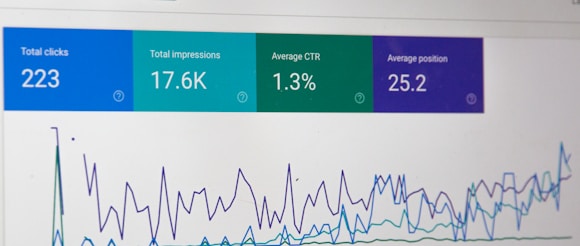SEO for Scriptwriters: Optimizing Your YouTube Scripts for Search
Bibliotheca Exotica
3 min read


Introduction
As a scriptwriter, your primary goal is to create engaging and compelling content for your audience. However, in today's digital age, it's crucial to also consider search engine optimization (SEO) to ensure that your scripts reach a wider audience and gain more visibility. In this blog post, we will dive deep into the world of SEO for scriptwriters and explore how you can optimize your YouTube scripts for search.
Keyword Research
Keyword research is the foundation of any successful SEO strategy. It involves identifying the words and phrases that people are using to search for content related to your scripts. By incorporating these keywords into your scripts, you increase the chances of your videos appearing in search engine results.
Start by brainstorming a list of relevant topics and themes that are central to your scripts. Then, use keyword research tools like Google Keyword Planner, SEMrush, or Ahrefs to find related keywords and phrases with high search volumes and low competition. Select a mix of broad and long-tail keywords to target.
Once you have your list of keywords, strategically incorporate them into your scripts. However, it's important to remember that keyword stuffing can negatively impact the quality of your content. Focus on using keywords naturally and organically throughout your script.
Title Optimization
Your video title is one of the most important SEO elements. It's the first thing that viewers see in search engine results, and it plays a significant role in determining whether someone clicks on your video or not. When optimizing your title, consider the following tips:
Include your target keyword or key phrase in the title.
Keep the title concise and engaging.
Avoid clickbait or misleading titles.
Consider adding numbers or specific details to make your title more enticing.
Description Optimization
The video description is another crucial element for SEO. It provides additional context about your video and helps search engines understand its content. Here are some tips for optimizing your video description:
Include your target keyword or key phrase in the first few sentences of the description.
Write a detailed and informative description that accurately represents the content of your video.
Consider adding timestamps to help viewers navigate through your video.
Include relevant links to your website or social media profiles.
Tags and Metadata
Tags and metadata provide additional information about your video and help search engines categorize and index it correctly. When choosing tags and metadata for your video, consider the following tips:
Include a mix of broad and specific tags that are relevant to your video.
Use variations of your target keyword or key phrase as tags.
Consider using tags that are popular and frequently searched for.
Optimize your video file name with relevant keywords.
Transcription and Closed Captions
Transcribing your script and adding closed captions to your videos not only improves accessibility but also provides search engines with valuable text to index. This can significantly boost your video's SEO. Here's how you can optimize your transcription and closed captions:
Ensure that your transcription accurately reflects the spoken content of your video.
Include relevant keywords and phrases naturally throughout the transcription.
Proofread and edit the transcription for accuracy and clarity.
Use closed captions that are synchronized with the audio of your video.
Engaging Thumbnail Images
While thumbnail images themselves do not directly impact SEO, they play a crucial role in attracting viewers and encouraging clicks. When creating thumbnail images for your videos, consider the following tips:
Choose an eye-catching and visually appealing image that accurately represents the content of your video.
Include text or graphics that highlight the main topic or benefit of your video.
Use high-quality images with the recommended resolution for YouTube thumbnails.
Avoid using misleading or unrelated images.
Promotion and Backlinking
Once you have optimized your YouTube scripts for search, it's important to promote your videos and build backlinks to improve their visibility and ranking. Here are some strategies to consider:
Share your videos on social media platforms and engage with your audience.
Embed your videos on your website or blog to attract more traffic.
Collaborate with other YouTube creators to cross-promote each other's content.
Reach out to relevant websites or blogs in your niche and request backlinks to your videos.
Conclusion
Optimizing your YouTube scripts for search is an essential aspect of scriptwriting in the digital age. By incorporating SEO best practices into your scripts, you can increase the visibility and reach of your videos, attracting a larger audience and gaining more recognition for your work. Remember to conduct thorough keyword research, optimize your titles and descriptions, utilize tags and metadata, transcribe your videos, create engaging thumbnails, and promote your content through various channels. With these strategies in place, you'll be well on your way to achieving SEO success as a scriptwriter.

